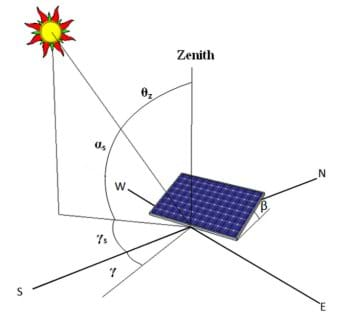Optimal azimuth angle for solar panels for best results your solar panels should face toward the equator.
Optimal solar panel azimuth.
Evaluated the optimal tilt angle and azimuth of a pv panel in canada.
For example the azimuth is 90 if solar is in the due east it is 90 if solar is in due west.
In the northern hemisphere between the latitudes of 23 and 90 the sun is always in the south.
If you live in the southern hemisphere face them north.
Positive 90 degrees is facing due west negative 90 degrees is facing due east.
There are two methods for calculating the tilt angle for solar panels.
Solar panels should always face true south if you are in the northern hemisphere or true north if you are in the southern hemisphere.
Solar panels produce electricity when sunlight hits their surface and they produce the most energy when that sunlight is exactly perpendicular to the panel face.
On the contrary in the countries of the southern hemisphere such as south africa and australia the best orientation is true north.
Whatever your latitude is you can subtract 15 from it to calculate the angle for summer.
True north is not the same as magnetic north.
In most of the solar pv energy calculator tools an azimuth value of zero is facing the equator in both northern and southern hemispheres.
The azimuth and tilt confirmation of solar panel is the one of important factors in the design of solar pv system.
The optimum tilt angle for an azimuth tracking was 19 closer to vertical than for a fixed south facing panel.
In terms of solar pv system the due south of azimuth is 0 it is minus angle from south to east to north it is positive angle from south to west to north.
If you live in the northern hemisphere face them south.
Tilt is the vertical angle where a 0 tilt means that the panel is laying flat and a 90 tilt means that it s vertical.
Azimuth is in the angle relative to map north where 0 is north 90 is west 180 is south and 270 is east.
Therefore the best angle for your solar panels is the one that allows the panels to get the most direct perpendicular light.
Similarly you can calculate the angle for winter by adding 15.
Both of these angles require latitude degrees.
The compass angle shows 180 for south 90 for east and 270 for west.

